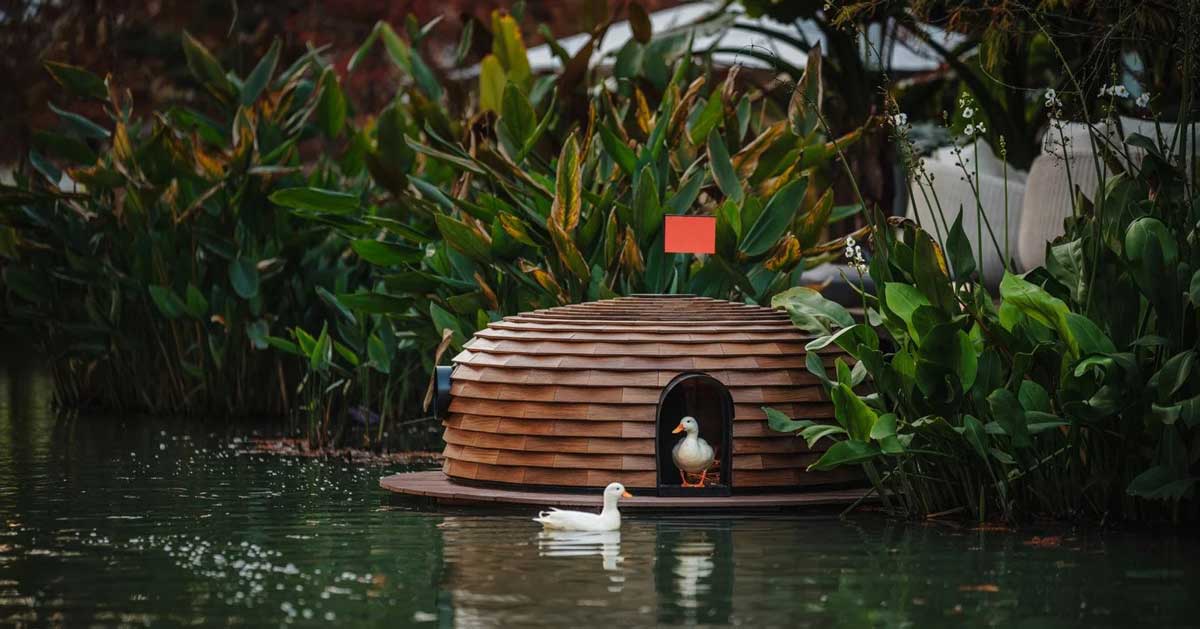As rising temperatures and inclement weather events become more commonplace in a changing climate, people have to adapt and prepare. But what about the animals that share our ecosystems with us?
The owners of Swiio Villa Yilan, a charming bed and breakfast resort in Taiwan, were worried about the call ducks that live on their property, vulnerable to harsh summer temperatures and turbulent typhoon seasons.
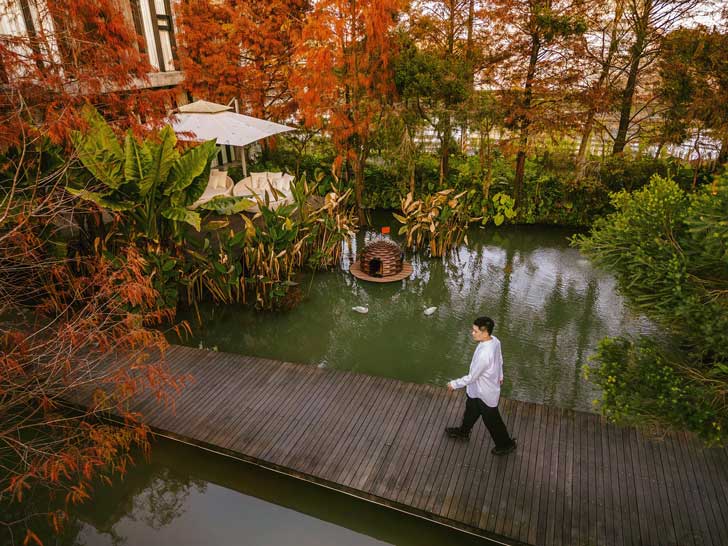 The shelters blend simply into the natural environment. Photo by FIXER Photographic Studio
The shelters blend simply into the natural environment. Photo by FIXER Photographic Studio
So, they called up artist and architect Cheng Tsung Feng and commissioned a floating shelter to help give the ducks a refuge from extreme weather, while still embracing their natural environment.
His design, called Nesting Plan VI Call Duck, is one in a series of “nesting plan” designs that draws inspiration from the ingenuity of plants and animals in nature.
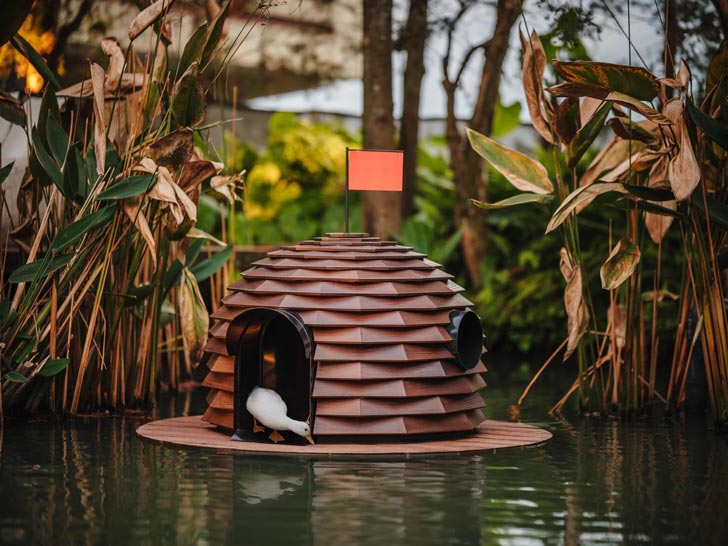 A duck inside of one of the new shelters. Photo by FIXER Photographic Studio
A duck inside of one of the new shelters. Photo by FIXER Photographic Studio
Feng was especially inspired by animals that already have their own nest-building techniques and interpreted their knowledge through human construction methods. What he ended up with was a pinecone-style hut made with rope-weaving materials and techniques.
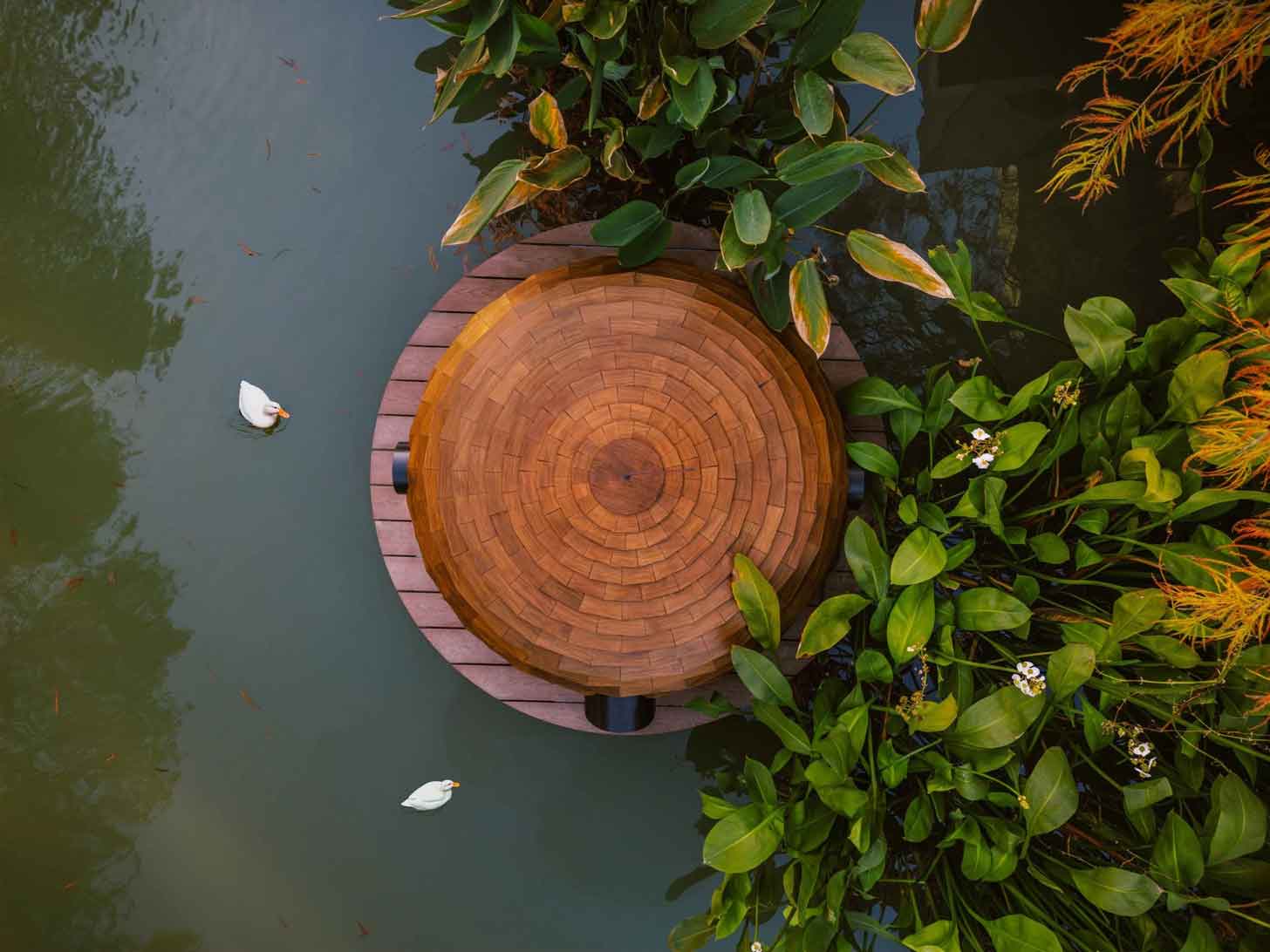 An aerial view of Nesting Plan VI Call Duck. Photo by FIXER Photographic Studio
An aerial view of Nesting Plan VI Call Duck. Photo by FIXER Photographic Studio
He also studied the behavioral patterns of the ducks to create something they would actually want to use. After noticing that the resident ducks would gather in four distinct groups in areas of the pond, he made four different pieces to place in their habitat.
“The structures were intended to provide a safe, comfortable, and weather-resistant habitat for the ducks, especially during Taiwan’s intensely hot summers and frequent typhoons,” Feng told Dezeen.
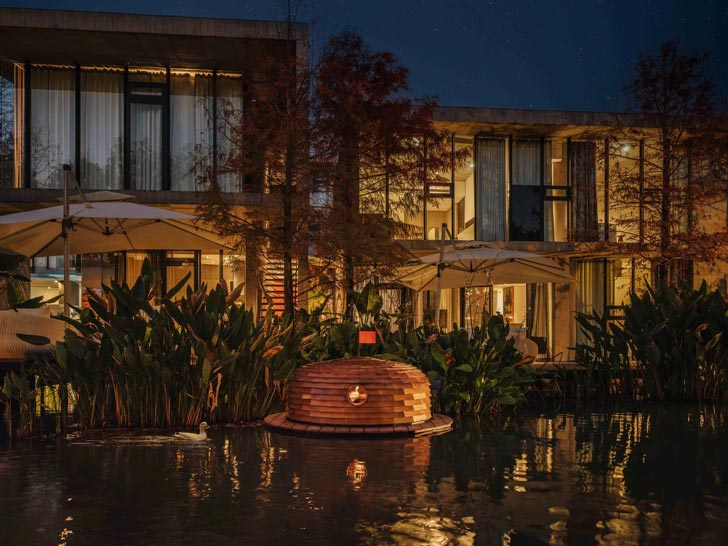 The ducks can be seen enjoying the shelter at night. Photo by FIXER Photographic Studio
The ducks can be seen enjoying the shelter at night. Photo by FIXER Photographic Studio
“We noted their preference for dry, secluded corners where they gather leaves and straw to form hidden nests.”
Other preliminary research included placing a prototype hut into the pond for trial use. The on-site staff filmed the ducks’ interactions and documented how they approached and used the structures. Feng then adjusted details like window height and buoyancy until he found the perfect settings for the birds.
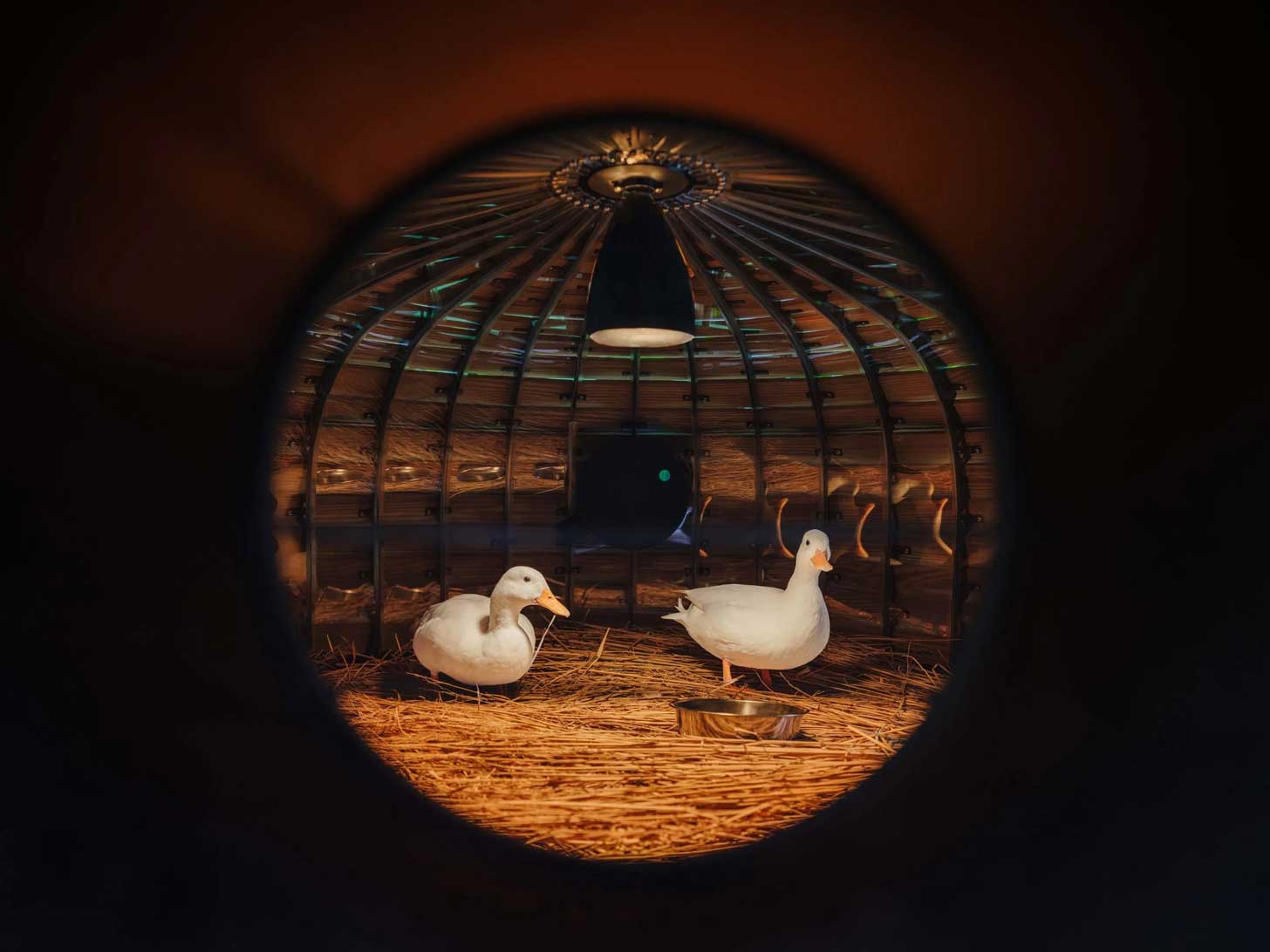 Ducks are seen through the circular window on the hut. Photo by FIXER Photographic Studio
Ducks are seen through the circular window on the hut. Photo by FIXER Photographic Studio
The final design was primarily made with pine wood, arranged in overlapping slats to provide prime ventilation, shade, and water drainage. Plus, it looked like the cacophony of pine cones already found in the area.
“Wood has an innate compatibility with lush, green environments, and its warmth makes it feel familiar and unobtrusive to animals,” Feng told Dezeen.
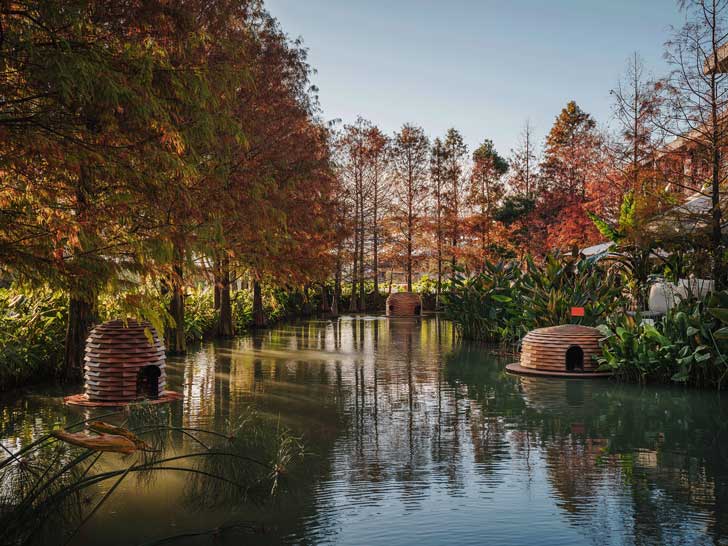 Three of the four huts in place. Photo by FIXER Photographic Studio
Three of the four huts in place. Photo by FIXER Photographic Studio
The four final huts were designed with various scales and heights to accommodate different groups of ducks, and circular windows were added, so the ducks could look out of their shelters.
Guests of the villa are also able to look through telescopes in their rooms to see the ducks in action.
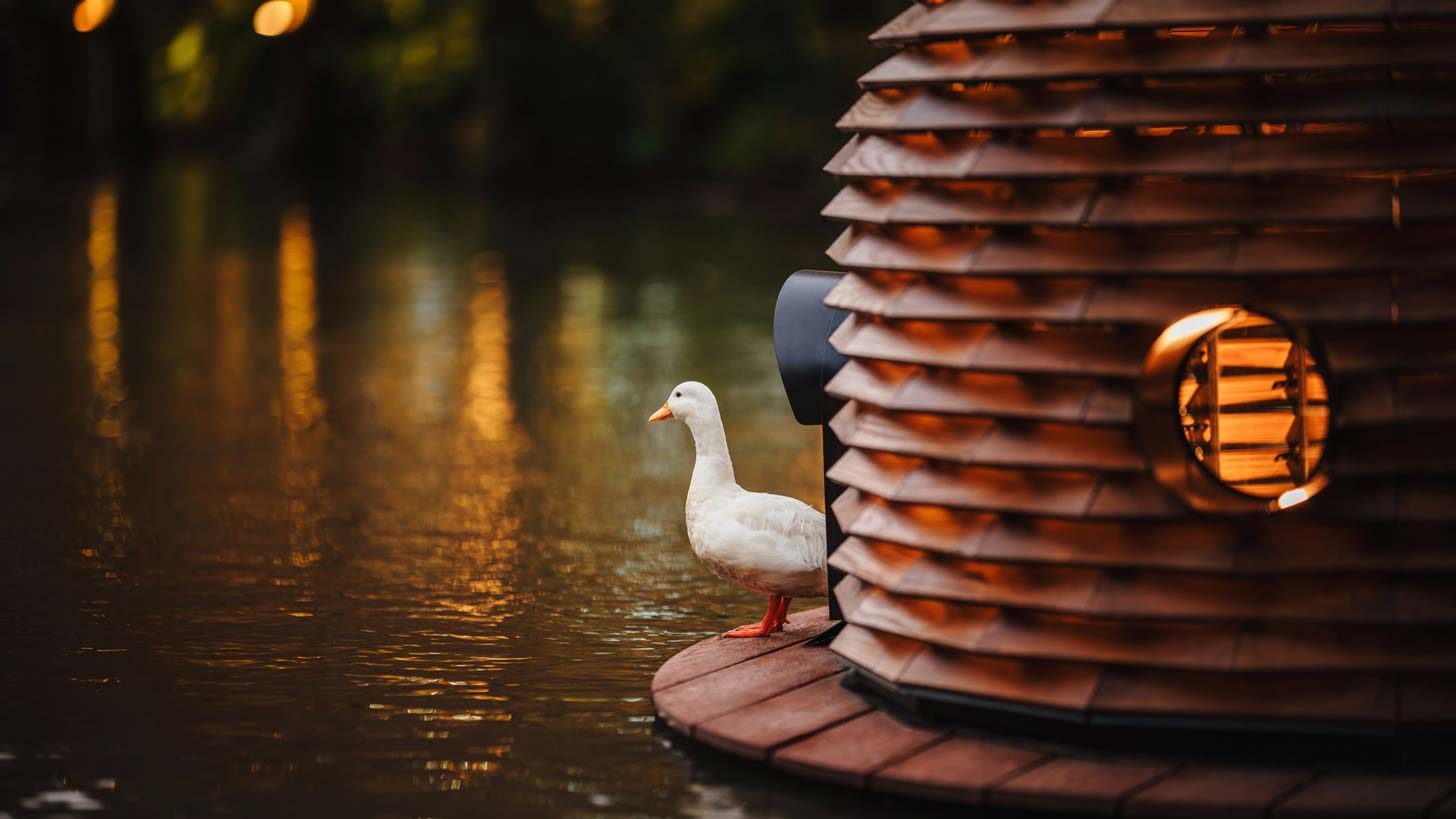 Lights automatically turn on for the ducks inside. Photo by FIXER Photographic Studio
Lights automatically turn on for the ducks inside. Photo by FIXER Photographic Studio
Perhaps most luxurious of all, though, each pinecone shelter includes automatic lighting that turns on during winter evenings or at set times, giving both the visitors and the ducks a warm and cozy ambiance.
About 25 ducks call the space home, and now, they get to enjoy a safe and sturdy upgrade when the rain starts to fall.
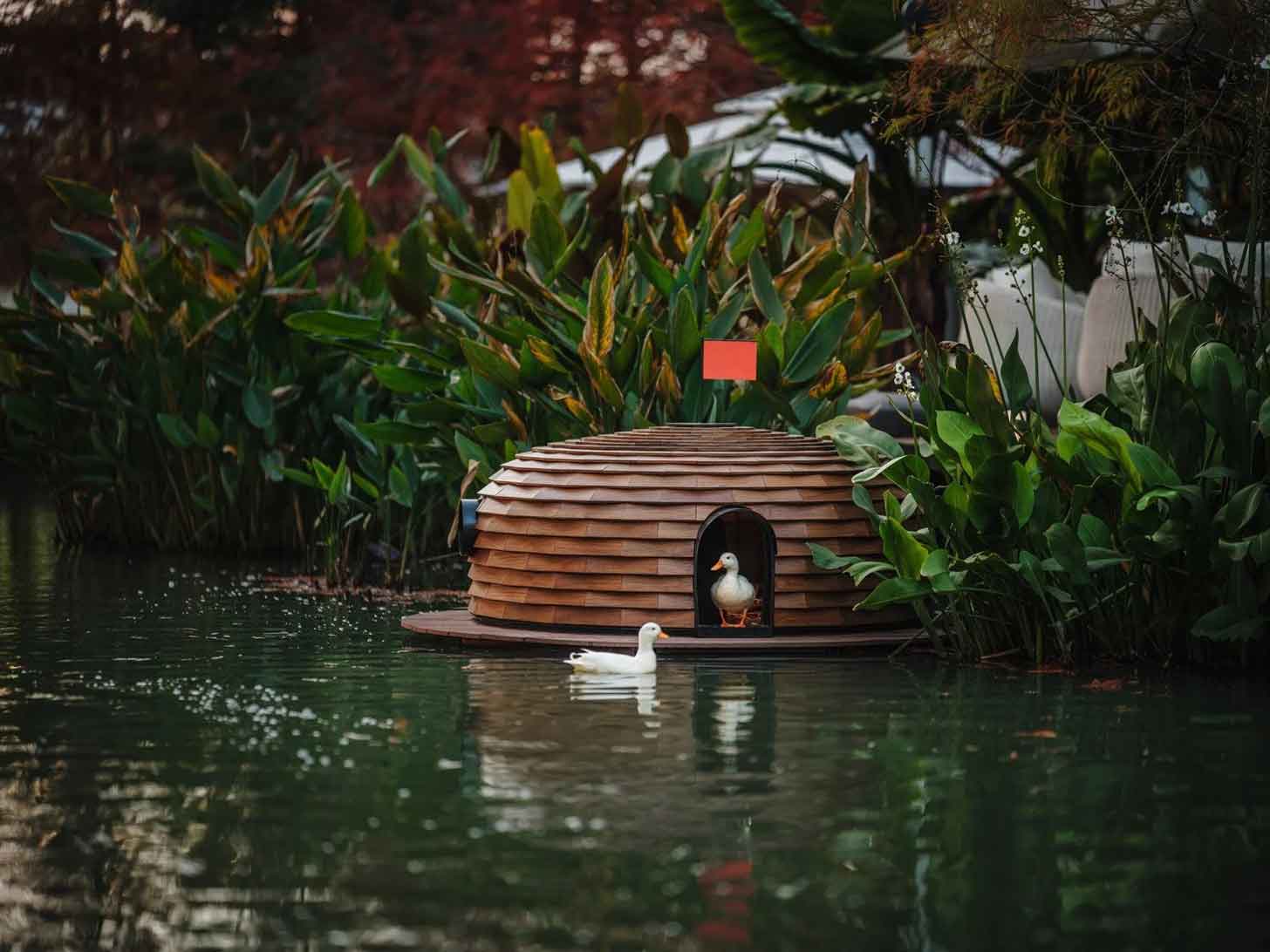 Two ducks safely shelter inside of one Feng’s huts. Photo by FIXER Photographic Studio
Two ducks safely shelter inside of one Feng’s huts. Photo by FIXER Photographic Studio
You may also like: Amid deforestation, elephants are running out of food. This architect built them a bamboo dining barn ‘to restore balance’
Header image by FIXER Photographic Studio

